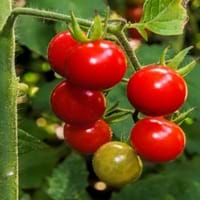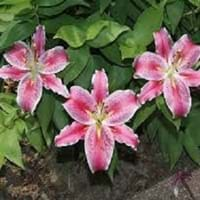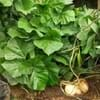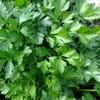Life Span
Annual
Perennial
Type
Vegetable
Bulb or Corm or Tuber
Origin
Mexico, Central America, South America
Hybrid origin
Types
Red, Yellow and Baby Plum
Oriental White
Pink Oriental
Light Pink Oriental
Red Oriental
Number of Varieties
Not Available
Habitat
Cultivated Beds
gardens, Tropical regions
USDA Hardiness Zone
11-15
4-8
Sunset Zone
A1, A2, A3, H1, H2, 1a, 1b, 2a, 2b, 3a, 3b, 4, 5, 6, 7, 8, 9, 10, 11, 12, 13, 14, 15, 16, 17, 18, 19, 20, 21, 22, 23, 24
21,22
Habit
Upright/Erect
Upright/Erect
Flower Color
Yellow
Pink, Magenta, Rose
Flower Color Modifier
Bicolor
Bicolor
Fruit Color
Red
Green, Sandy Brown
Leaf Color in Spring
Green, Dark Green
Green
Leaf Color in Summer
Green, Dark Green
Light Green
Leaf Color in Fall
Green, Dark Green
Several shades of Green
Leaf Color in Winter
Green, Dark Green
Light Green
Leaf Shape
Lanceolate
Heart-shaped
Plant Season
Spring, Summer, Fall
Summer
Sunlight
Full Sun
Full Sun, Partial Sun
Type of Soil
Loam, Sand
Clay, Loam, Sand
The pH of Soil
Neutral
Neutral
Soil Drainage
Well drained
Average
Bloom Time
Indeterminate
Summer
Tolerances
Drought
Drought
Where to Plant?
Container, Ground, Pot
Ground, Pot
How to Plant?
Seedlings
From bulbs, From Rhizomes, Stem Planting
Plant Maintenance
Medium
Medium
Watering Requirements
Requires regular watering
Keep the ground moist but not water-logged, Water more in summer, Water when soil is dry
In Summer
Lots of watering
Lots of watering
In Spring
Moderate
Moderate
In Winter
Average Water
Average Water
Soil Type
Loam, Sand
Clay, Loam, Sand
Soil Drainage Capacity
Well drained
Average
Sun Exposure
Full Sun
Full Sun, Partial Sun
Pruning
Dispose of diseased portions, Remove dead leaves
Remove damaged leaves, Remove dead branches, Remove dead leaves
Fertilizers
organic fertlizers
All-Purpose Liquid Fertilizer
Pests and Diseases
fungus
Red blotch
Plant Tolerance
Heat Tolerance
Drought
Flower Petal Number
Single
Single
Fragrant Bark/Stem
Yes
No
Foliage Texture
Medium
Medium
Foliage Sheen
Matte
Glossy
Attracts
Butterflies
Butterflies, Hummingbirds
Allergy
Diarrhea, gastro-intestinal problems, Headache, Itchiness, Vomiting
Asthma
Aesthetic Uses
As decorated salad
Beautification, Bouquets
Beauty Benefits
Acne, Glowing Skin, Maintains teeth healthy
Not Available
Environmental Uses
Air purification
Air purification
Medicinal Uses
Antioxidants, Metabolism
Cough, Fever, Stomach pain, tuberculosis
Part of Plant Used
Fruits
Flowers, Leaves
Other Uses
Cosmetics, Culinary use, For making oil, Repellent
Making Perfumes, Showy Purposes, Use in Chinese herbology, Used as Ornamental plant, Used for fragrance
Used As Indoor Plant
Yes
Yes
Used As Outdoor Plant
Yes
Yes
Garden Design
Container, Edible, Herb, Vegetable, Houseplant
Container, Cutflower, Mixed Border
Botanical Name
LYCOPERSICON esculentum 'Tiny Tim'
LILIUM 'Acapulco'
Common Name
Cherry Tomato
Acapulco Oriental Lily, Oriental Lily
In Hindi
चेरी टमाटर
ओरिएंटल लिली
In German
Kirschtomate
Orientalische Lilie
In French
Tomate cerise
Lily Oriental
In Spanish
Tomate cherry
lirio oriental
In Greek
Ντοματάκι
Oriental Lily
In Portuguese
Tomate cereja
Lily Oriental
In Polish
Pomidor wiśniowy
Oriental Lily
In Latin
Cherry LycopersiciSusceptibility
Oriental Lily
Phylum
Magnoliophyta
Not Available
Class
Magnoliopsida
Not Available
Family
Solanaceae
Liliaceae
Clade
Angiosperms, Asterids, Eudicots
Angiosperms, Monocots
Subfamily
Solanoideae
Lilioideae
Number of Species
Not Available
Importance of Cherry Tomato and Oriental Lily
Want to have the most appropriate plant for your garden? You might want to know the importance of Cherry Tomato and Oriental Lily. Basically, these two plants vary in many aspects. Compare Cherry Tomato and Oriental Lily as they differ in many characteristics such as their life, care, benefits, facts, etc. Every gardener must at least have the slightest clue about the plants he wants to plant in his garden. Compare their benefits, which differ in many ways like facts and uses. The medicinal use of Cherry Tomato is Antioxidants and Metabolism whereas of Oriental Lily is Cough, Fever, Stomach pain and tuberculosis. Cherry Tomato has beauty benefits as follows: Acne, Glowing Skin and Maintains teeth healthy while Oriental Lily has beauty benefits as follows: Acne, Glowing Skin and Maintains teeth healthy.
Compare Facts of Cherry Tomato vs Oriental Lily
How to choose the best garden plant for your garden depending upon its facts? Here garden plant comparison will help you to solve this query. Compare the facts of Cherry Tomato vs Oriental Lily and know which one to choose. As garden plants have benefits and other uses, allergy is also a major drawback of plants for some people. Allergic reactions of Cherry Tomato are Diarrhea, gastro-intestinal problems, Headache, Itchiness and Vomiting whereas of Oriental Lily have Asthma respectively. Having a fruit bearing plant in your garden can be a plus point of your garden. Cherry Tomato has showy fruits and Oriental Lily has no showy fruits. Also Cherry Tomato is not flowering and Oriental Lily is not flowering . You can compare Cherry Tomato and Oriental Lily facts and facts of other plants too.





